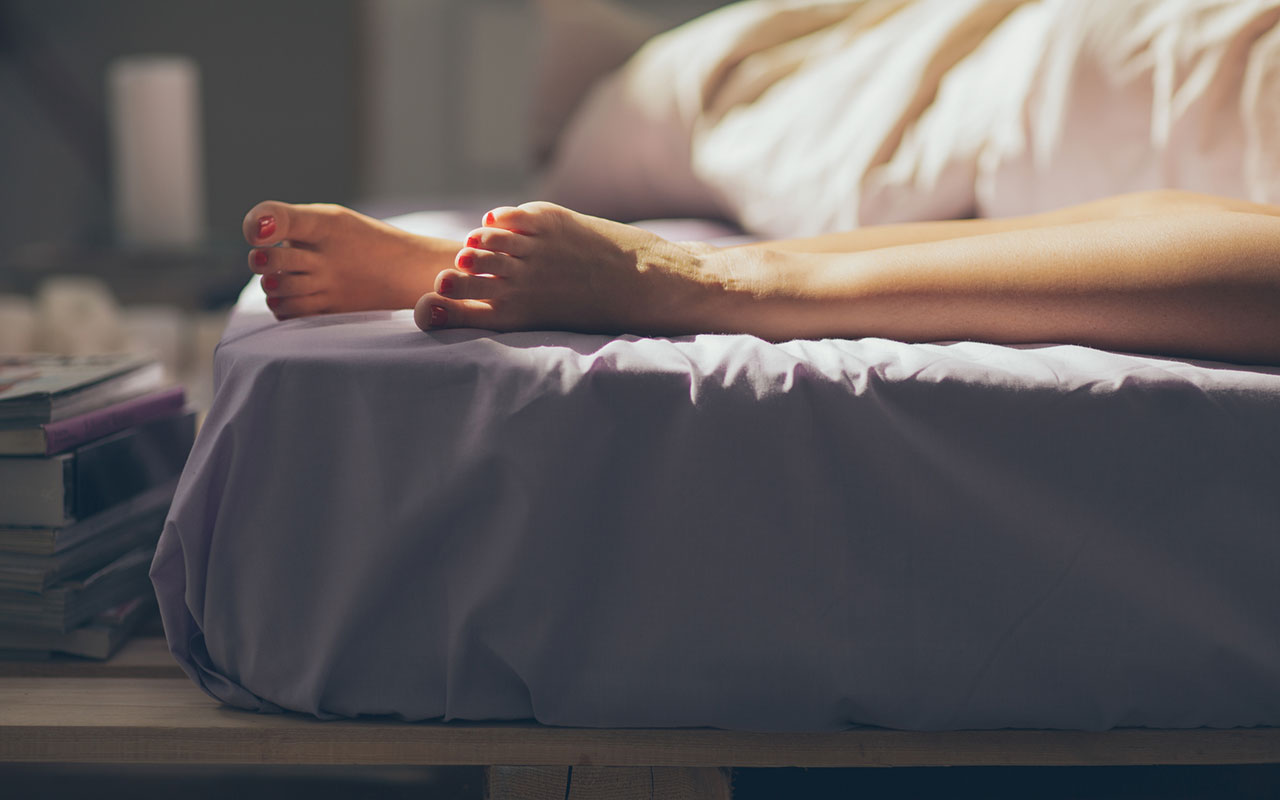Do I Have Restless Legs Syndrome?

Living with the symptoms of a sleep disorder can leave you feeling Beyond Tired®. Learn more from the NSF here.
Uncontrollable twitching in the lower limbs is one sign of this frustrating condition that interrupts sleep. Learn more about the risk factors, symptoms, and treatments.
What Is Restless Legs Syndrome?
Restless legs syndrome (RLS) is a sleep disorder that involves an involuntary movement of the legs when the body is at rest. RLS, which also goes by the name Willis-Ekbom disease, can cause pain and discomfort and may affect up to 10 percent of Americans.
RLS can interrupt daily activities at work and at home and is classified as a sleep disorder, generally occurring while a person is awake, but getting worse at night (symptoms frequently come on while a person is attempting to fall asleep). You may be able to find temporary relief from RLS by moving your legs, stretching, or getting up and walking. Unfortunately, the same sensations can return when a person sits down again or heads back to bed.
Causes and Risk Factors for RLS
Women are at greater risk of having RLS than men, although both men and women can develop the condition and it can begin at any age. In many cases, however, those with severe bouts of RLS are middle-aged or older and the symptoms that accompany it tend to worsen and increase in frequency as a person ages. For people who develop symptoms before the age of 40, it’s likely someone else in the family has RLS as well. Research indicates that this condition has a genetic component.
RLS may come about because of a dysfunction in the section of the brain that controls movement. This part of the brain relies on a chemical called dopamine to signal to the muscles that it’s time to act. In normal circumstances, dopamine sets off a chain of reactions that results in smooth, intentional movements by the muscles in the body. But when the dopamine pathway in the brain is disrupted, RLS can occur.
Additional risk factors for RLS may include:
- certain medications (anti-nausea drugs and antidepressants)
- iron deficiency
- kidney disease
- nerve damage
- pregnancy (especially during the third trimester)
- rheumatoid arthritis or osteoarthritis
- use of alcohol, nicotine, and caffeine
Restless Legs Syndrome Symptoms
If you’re wondering whether you have RLS, the most common symptom is a very strong urge to move your legs. It is frequently accompanied by unpleasant sensations, which are described differently by different people. People with RLS often refer to it as an itching, tingling, aching, burning, crawling, or throbbing pain. Some people describe the feeling as bugs or worms crawling in the muscle or like water running under the skin. These symptoms can range from a simple annoyance to severe discomfort and usually affect both legs (but can alternate between the left and right or occasionally occur only on one side of the body).
Other symptoms include periodic rhythmic leg movements during sleep or a worsening of restless movement at night, which can force a person to toss and turn in bed or get up and pace, thus interfering with sleep. RLS sensations may change from one day to the next and generally occur once or twice a week, though in serious cases symptoms are more frequent. Lost sleep at night due to RLS can make daytime activities difficult to accomplish.
Diagnosing RLS
Make sure to share your symptoms with your physician. The following criteria may be used to evaluate RLS:
- An uncontrollable urge to move the legs, often joined with uncomfortable feelings like itching, crawling, tingling, or aching
- Symptoms that begin or worsen when seated or lying down
- Some symptom relief when walking or stretching
- RLS symptoms that worsen at night
- No other condition matches the RLS description
As part of a diagnostic appointment, your healthcare provider will note how often you experience symptoms, how uncomfortable they are, and their duration. You’ll also be asked whether moving around helps with pain relief. If RLS keeps you from sleeping, your healthcare provider will note this, and ask you about the amount of sleep you’re able to get and whether fatigue from sleep disruption impacts your daily routine.
Along with a physical—and possibly a neurological—exam, you may be given blood tests to determine whether an iron deficiency or kidney trouble is present. Be sure to share any medications you take in case one of them impacts your RLS symptoms.
And since RLS is a sleep disorder, a referral to a specialist may be recommended so you can be evaluated overnight with a sleep study.
Treatment Options for RLS
Treatment plans for RLS can take a variety of forms. For those with mild or moderate symptoms, a few lifestyle changes may make a big difference. These shifts in behavior may include quitting smoking, drinking fewer caffeinated or alcoholic beverages, avoiding certain antihistamines, establishing a sleep schedule, and engaging in regular moderate exercise. RLS symptoms may also be treated with leg massage, warm baths, ice packs, or a heating pad.
Other cases of RLS may require medications, whether over-the-counter or by prescription. Your healthcare provider may talk with you about these options:
- anti-anxiety medication (drugs which typically treat anxiety and muscle spasms)
- anti-seizure and anticonvulsant medications, including gabapentin and pregabalin
- dopaminergic agents (these increase the dopamine effect in the body)
- iron supplements
- opioids (less frequently recommended because of addictive properties)
If twitching legs are keeping you up at night and you think you may have RLS, talk with your healthcare provider. Together, you can come up with a treatment plan that best suits your needs.
